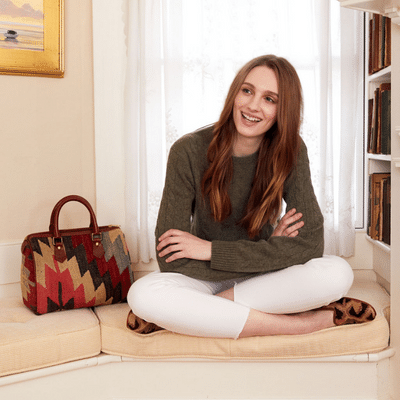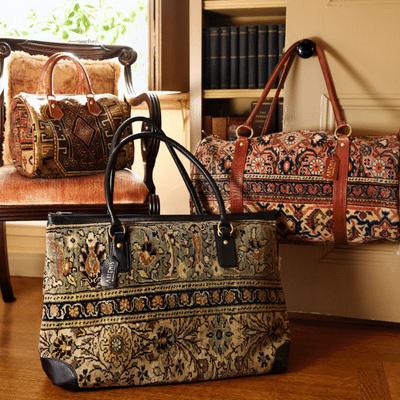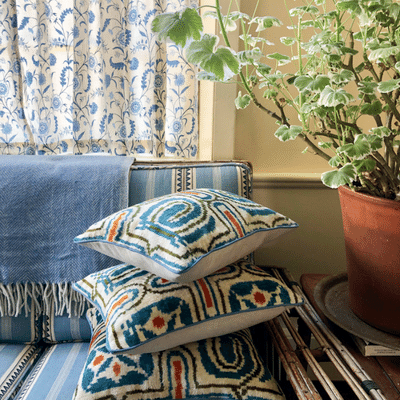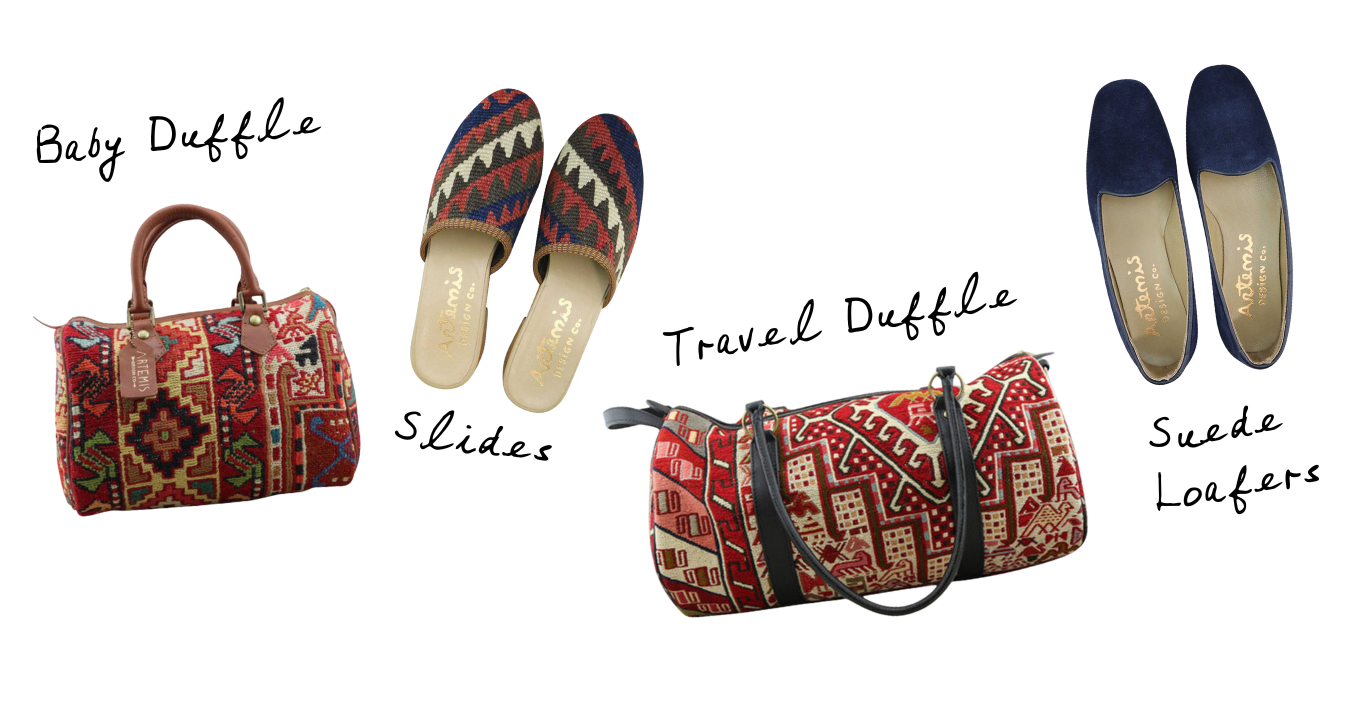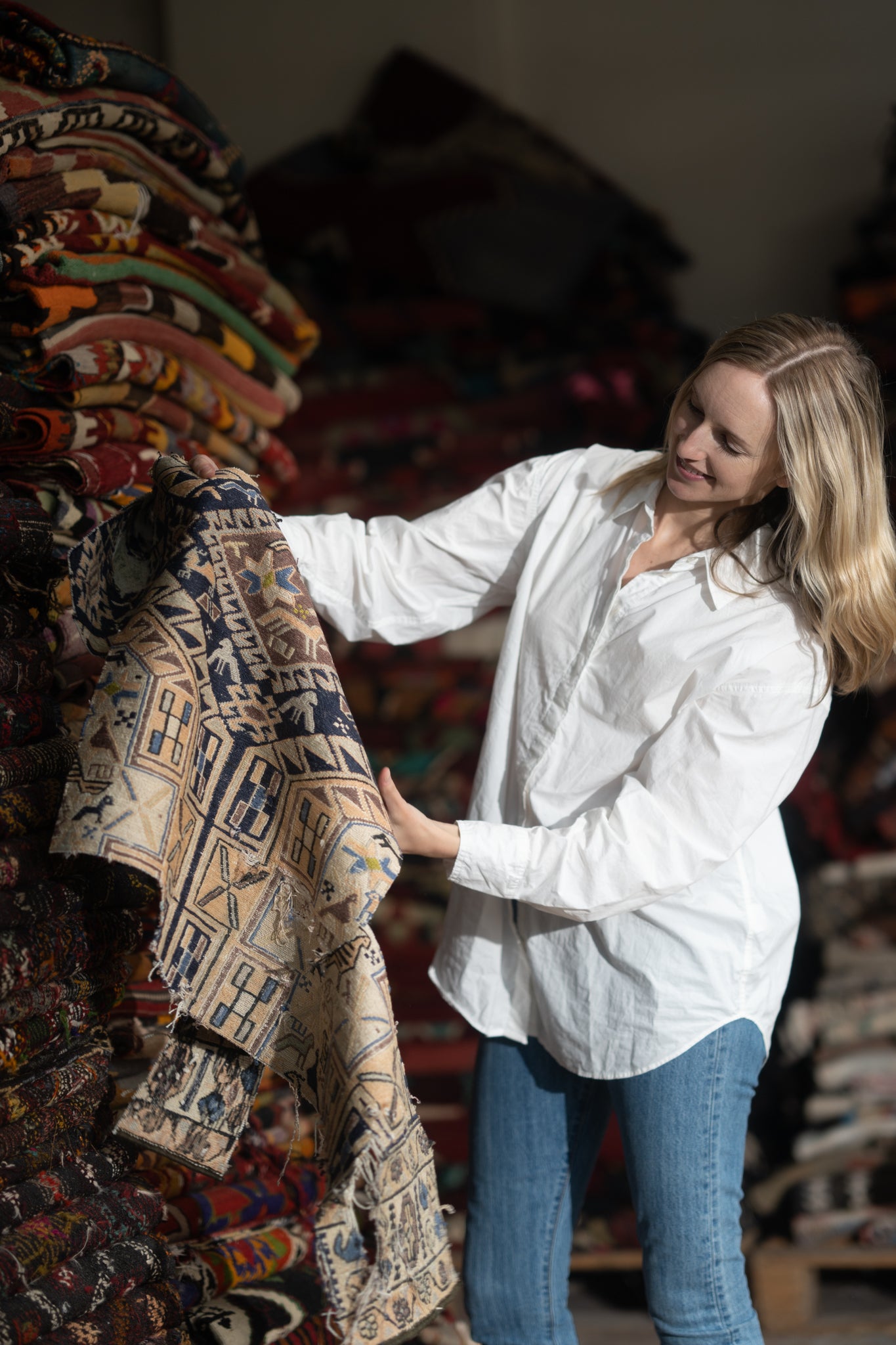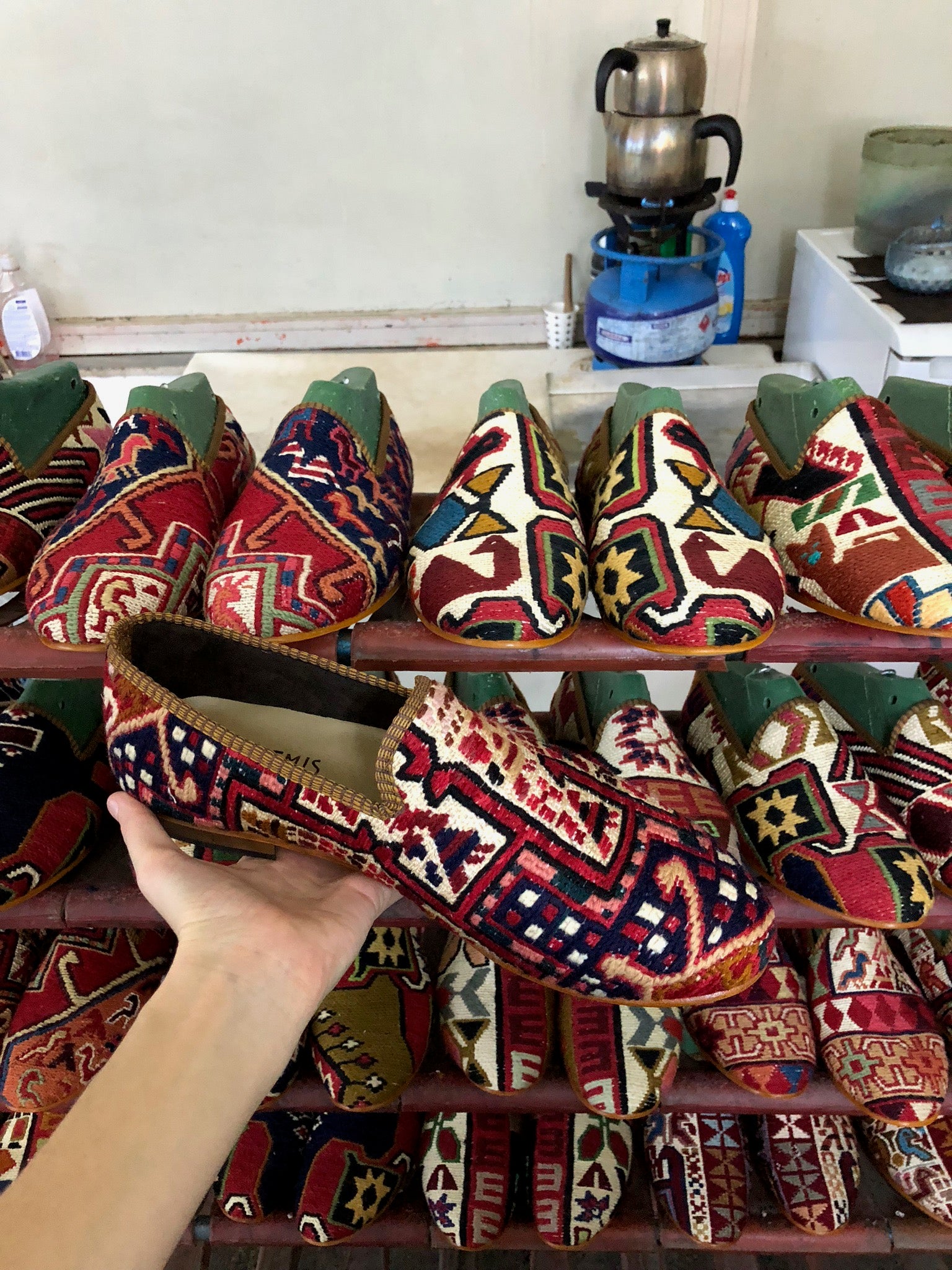Mad about Kilim!
Every Artemis product is handmade with love using a magical textile called kilim. We travel to Turkey to pick kilims that are durable, timeless, and of the best quality. We look for unique patterns and intricate weaving, with thoughtful intentions to preserve each fabric’s expression of storytelling and history.
What, exactly, is a Kilim?
Ki·lim: kēˈlēm/
Kilims are flat-woven textiles and rugs with a centuries-old history, and origins in Turkey’s Anatolia peninsula. Traditionally made from wool, cotton, and other natural fibers, kilim is a pileless, interwoven fabric with identical front and back patterns.
These thin, flat-woven carpets can be traced to 7000 B.C. in Central Anatolia, when they were commonly used as durable, lightweight floor coverings for nomadic tents. The ancient art form traveled by trade and settlement through Iran, Pakistan, and Central Asia, evolving with regional nuances, variations of flat-weaving technique, and everyday uses. From prayer rugs to table covers to wall hangings, kilim has warmed homes all over the world for centuries.
While mass produced, machine-made kilim entered the European market in the 19th century, handcrafted techniques continue to be passed through generations in Turkey. We source Artemis kilim from the Turkish regions: Kayseri, Esme, Kars, and Sumak. Each regional maker has her own distinct style and manufacturing methods; a representation of Kilim's versatility and enduring elegance.
Types of kilim
Artemis Design Co. Kilim
Our earliest designs feature a range of handpicked kilim that we source with our wonderful rug dealer in Turkey. We’ve since expanded our collection to incorporate lustrous silk velvet and plush Oriental carpet, but classic kilim will always be at the root of Artemis’s DNA.
Kayseri kilim (examples below): Small, delicate motifs featuring flowers and asymmetrical patterns. Because of the asymmetry they are harder to use for shoes, but great for pocketbooks and wallets. Usually this type of carpet is “Double winged”- they are two large strips made on smaller looms, and are threaded in the middle to create a larger carpet. Oftentimes sisters would work side by side creating them and then stitch them together once finished. We use Kayseri Kilims from the 1930s or earlier.

Kars kilim: Humble earth tones that are perfect for everyday wear. Kilims from Kars typically large-scale and feature an interesting border and a larger scale geometric pattern in the middle.

Esme kilim: Beautiful geometric designs in bright and muted colors that make for gorgeous statement pieces. This region is also known for producing large carpets, so each Artemis design using Esme kilim features bold, exaggerated design.

Sumak (or Soumak) kilims: Vibrant, and crisp — these are a fashionable, classic favorite and a must-have for every Turkish textile lover. Sumak is a more intricately detailed, textured weave with a ragged back, unlike traditional kilim. The sumak carpets we’ve chosen incorporate all sorts of fun creatures and motifs that make every cut truly special. Our Kilim Shoes made from Sumak Kilim often feature crisp reds, whites, and blues, making them perfect for a classic summertime wardrobe.

Why kilim?
A brief intro to symbolism, pattern and color.
Milicent fell in love with kilim after visiting Turkey’s famed Grand Bazaar in 2007. The colors, textures, and pattern of the kilims were the first thing that caught her eye.
"The deeper that I got into the history and symbolism of the pieces, the more I fell in love with the craft"
More than beautiful rugs, rich symbolism and stories are woven into each one-of-a-kind fabric. In Turkish culture, kilim creation is a women-dominated industry, and female artists weave their desires, anger, and happiness through a sacred language of color and symbols. Arrows pointing in opposite directions represent a horse, a sign of family unity, while a simple bird may signal a longing for news. A kilim is not just a piece of art — it is a piece of a life story. Below is a brief guide to reading Kilim symbols.

Can you find some of these symbols woven into the bags and shoes for sale throughout our site?
In the words of our rug dealer:
“When I see the kilim, I know the region, the people who make them, and each pattern has meanings. When I unfold and reveal the design, I imagine how tough, or how happy those times were for the people who made them. Often, the carpet shows the happiness of the woman who made it through light, bright colors. The mood of the kilim reflects the mood of the weaver. Every kilim brings different excitement, like a fine piece of art.”
Read the full interview with our manufacturing partner here.


